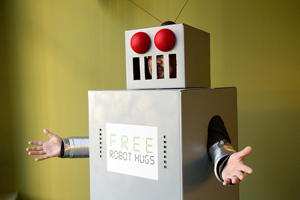As the life expectancy of humans is extended and the elderly become an ever-growing population, could robots be the next ideal caregivers? According to an EU research project, this is a possibility.
Within a decade in Europe, there will be roughly 84 million elderly with age-related problems.
However, it is worth noting that the European senior citizens have a disposable income of more than EUR 3,000 billion. By 2016, the need for robots in EU for the elderly could reach around EUR 13 billion, said Stephen Von Rump, the Giraff Technologies AB CEO.
The increasing demand for care giving services is happening not only the EU but in many other countries as well. Mr. Von Rump said that it might be high time to seriously consider turning to technology for help. In the EU alone, there are around 5 million homes with an elderly needing formal care services and 12 million homes around the world and possibly more who would have preferred home care.
The EU research project, called GIRAFF+, was conducted to see how the sensors functioning with the help of sensors can provide the older people’s need for a more independent, safe, and more social life even when they are at home. The biggest highlight of the system was the use of a telepresence robot called Giraff. It moves around the house of the elderly, helping them communicate with their family, household members, friends, and health care professionals largely through video-conference. The system also includes sensors installed in various parts of the home and some wearable devices. The sensors can tell if you are cooking, watching TV, or sleeping. They can also give you medical information, such as body temperature and blood pressure. The caregivers can then look after the well being of the patient.
Before 2014 ends, the GIRAFF+ system will be in about 15 homes. Currently, it is already in two homes each in Spain, Italy, and Sweden. It is better suited to the needs of each patient.
Now, the system could be commercially produced by 2015. Patients would have to pay an upfront fee and their monthly subscription, giving it competitive rates when compared to full-time care.
You can learn more about robot caregivers in the links below.

